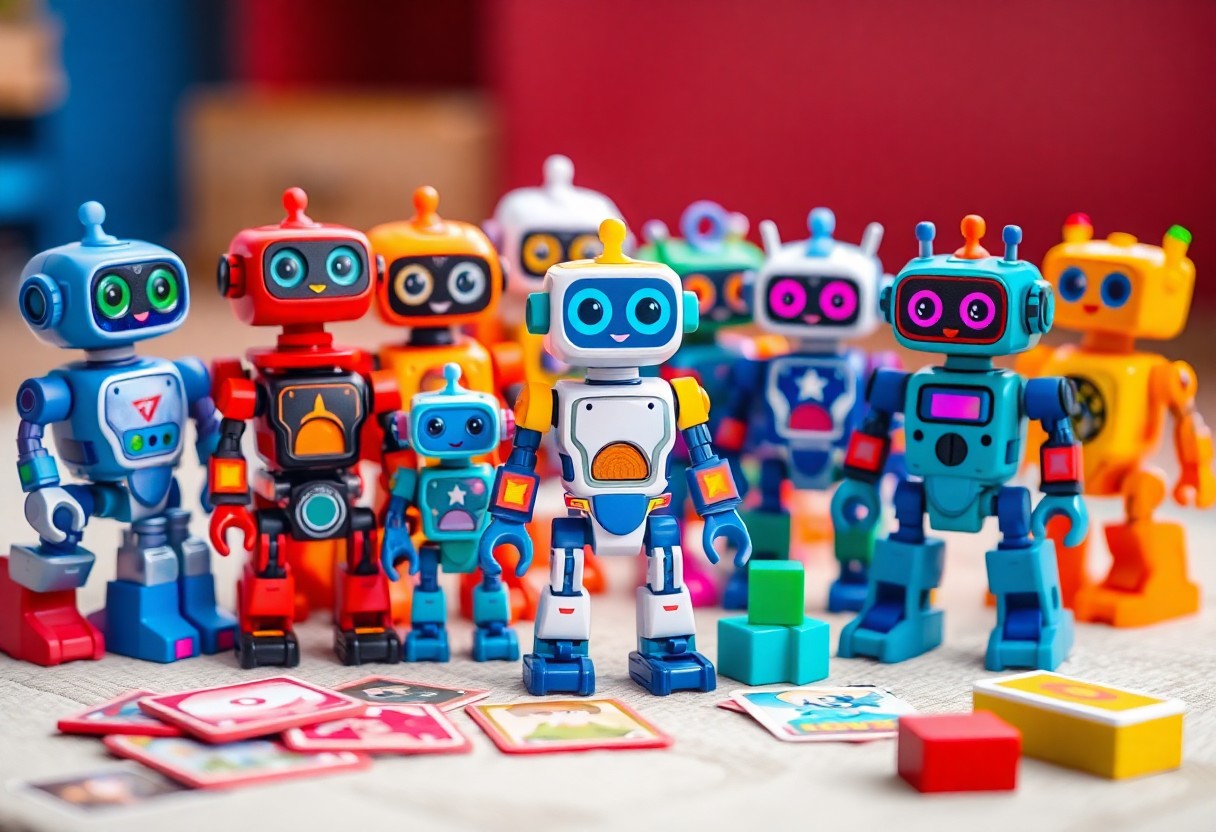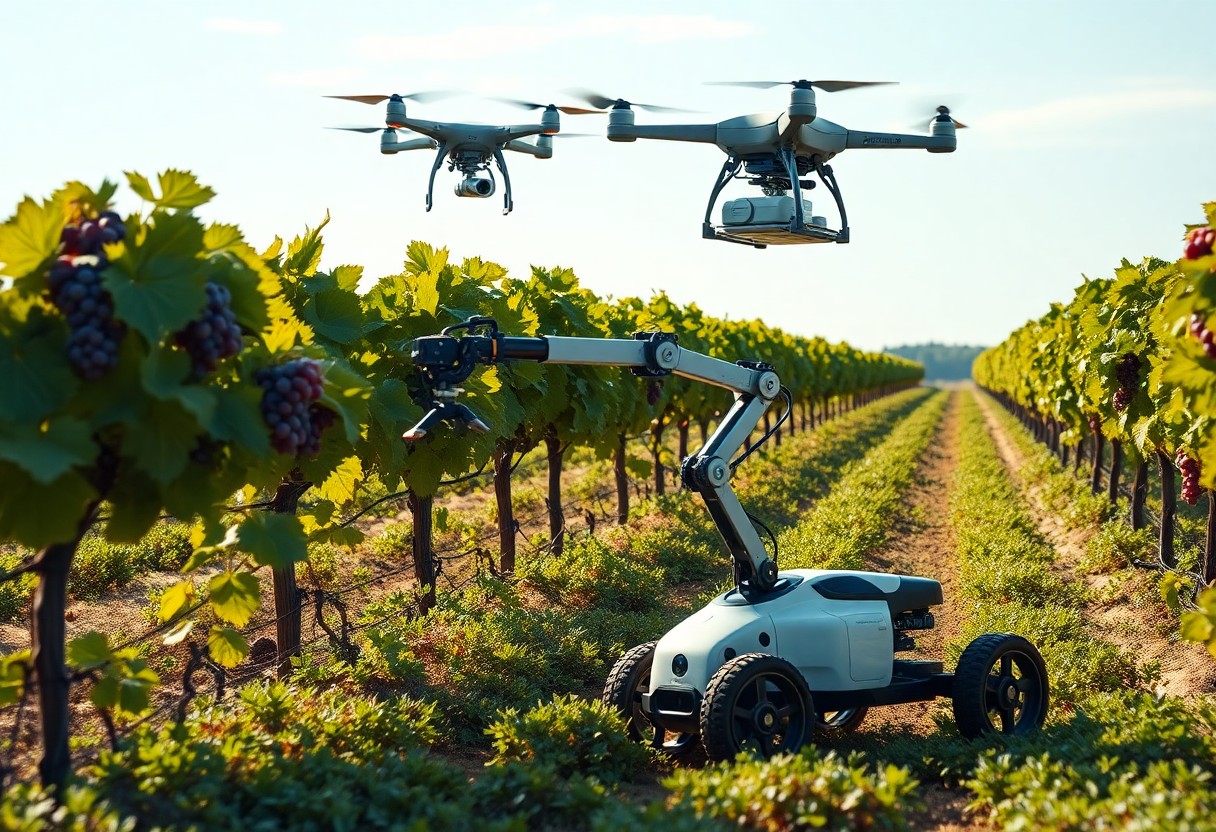Tasks that once required human skill are being increasingly handled by robots, showcasing their growing versatility in everyday situations. As technology evolves, you may find yourself intrigued by the exceptional capabilities of robotics, from complex cooking techniques to personalized home maintenance. In this blog post, you’ll discover how these machines are honing uncommon proficiencies that enhance efficiency and convenience in your daily life, reshaping the way you interact with the world around you.
Advanced Navigation Techniques
Before delving into the details, it’s necessary to highlight how advanced navigation techniques empower robots in everyday tasks. Here’s what you can expect:
- Precision mapping
- Real-time data processing
- Adaptive routing
- Multi-sensor integration
- User-friendly interfaces
| Feature | Benefit |
|---|---|
| Precision mapping | Enhances route accuracy to avoid delays. |
| Real-time data processing | Enables quick responses to changes in the environment. |
Spatial Awareness
Behind every successful navigation lies a robust understanding of spatial awareness. This allows robots to analyze their surroundings, recognizing objects, spaces, and pathways to navigate effectively. With your input, these systems learn continuously, imbuing them with the capacity to maneuver around furniture, people, and various obstacles with remarkable precision.
Obstacle Avoidance
Any effective navigation system incorporates advanced obstacle avoidance capabilities. This feature is necessary as it ensures that your robot can detect and bypass obstacles seamlessly, preventing accidents and ensuring smooth travel in dynamic environments.
Understanding obstacle avoidance involves utilizing a variety of sensors, such as LIDAR and cameras, to interpret the robot’s environment. These technologies allow the robot to create an accurate map of its surroundings, identifying potential barriers in real time. By processing this information, your robot can make decisions about the best path to take, ensuring it avoids collisions and safely navigates through your home or workspace.
Sensory Perception Enhancements
You will be amazed by how robots are evolving in their ability to perceive and interact with the world around them. Advancements in sensory perception are enabling robots to execute everyday tasks more efficiently by mimicking human-like capabilities. From touch sensitivity to visual acuity, these enhancements are transforming machines into adept assistants, ready to tackle various challenges in your daily life.
Touch and Grip
Among the most impressive advancements in robot design are the capabilities in touch and grip. Robots can now utilize soft robotics technology, allowing them to handle delicate objects with precision. By adjusting their grip based on the texture and weight of an item, these robots can perform tasks ranging from gentle object manipulation to heavier lifting, making them indispensable in your home or workplace.
Visual Recognition
Above all, visual recognition technology equips robots with the power to discern their surroundings intelligently. By employing deep learning algorithms and advanced sensors, these machines can identify, analyze, and interpret visual information in real time, resulting in enhanced performance during various tasks.
It enables robots to recognize faces, objects, and environments with remarkable accuracy, improving their interaction with you. For instance, robots can distinguish between different types of produce in a grocery store or navigate through complex spaces in your home. This visual competence not only streamlines daily activities but also fosters a more intuitive and seamless experience as these robots assist in your everyday routines.
Cognitive Processing Capabilities
While robots are often viewed as mere machines, their cognitive processing capabilities are revolutionizing how they perform everyday tasks. By mimicking human-like thought processes, robots can analyze complex situations, adapt to new environments, and make informed choices. This development allows you to interact with robots in more natural ways, enhancing efficiency and convenience across various applications, from cooking to cleaning.
Decision-Making Algorithms
On the frontlines of robotic intelligence, decision-making algorithms empower robots to evaluate multiple options and select the best course of action. These algorithms enable you to rely on robots for tasks that require quick judgment and real-time adaptability, enhancing both safety and performance.
Machine Learning Applications
To further enhance their cognitive capabilities, robots utilize machine learning applications that allow them to learn from past experiences. This adaptive learning helps you ensure that robots become increasingly efficient over time, tailoring their functions to better suit your preferences and needs.
With the integration of machine learning, robots can process vast amounts of data to identify patterns and make predictions based on previous interactions. This continuous learning enables you to experience personalized solutions, whether it’s a vacuum that remembers where to clean or an assistant that knows your daily schedule. As they adapt to your habits, robots become more intuitive allies in your daily life, highlighting the evolving landscape of automated assistance.
Human-Robot Interaction Skills
Once again, as robots integrate into our daily lives, their proficiency in human-robot interaction is developing rapidly. These advanced interaction skills facilitate seamless collaboration, making it easier for you to engage with machines in various contexts. From household chores to customer service, understanding how robots communicate and react to human behavior is necessary in promoting efficiency and enhancing your experience. The more adept robots become at interacting with you, the more they can adapt to your needs and preferences.
Communication Proficiency
Around the world, robots are being designed with enhanced communication abilities, enabling them to understand spoken language, gestures, and contextual cues. This capability ensures that robots can follow your instructions accurately and respond to your queries effectively, thereby simplifying everyday tasks. By mastering various communication methods, robots become more intuitive and user-friendly, allowing you to interact with them as naturally as you would with other people.
Emotional Intelligence in Robotics
One of the more fascinating advancements in robotics is the development of emotional intelligence. This allows robots to detect and respond to your emotional state, fostering a more engaging interaction. By interpreting emotional cues, they can adapt their behavior accordingly, making them not only functional but also relatable companions.
Indeed, emotional intelligence in robotics opens new avenues for enhancing your interactions with technology. Robots equipped with this capability can analyze your tone of voice, facial expressions, and even body language, which allows them to assess how you are feeling. This level of understanding enables them to provide tailored assistance, whether comforting you in stressful situations or celebrating your achievements. As this technology advances, you will find that robots can become more than just tools; they can evolve into supportive partners in your daily life.
Adaptability to Unpredictable Environments
Keep in mind that robots are increasingly being designed to navigate and operate in unpredictable environments. Whether in disaster recovery scenarios or everyday settings, these machines can adjust their strategies on the fly, ensuring they remain effective despite the challenges they face. This level of adaptability not only enhances their utility but also increases their safety and efficiency when deployed in diverse situations.
Dynamic Tasking
To handle various tasks simultaneously, robots must excel at dynamic tasking. This capability allows them to prioritize and switch between different duties in real time, ensuring that they can respond effectively to new demands as they arise. By dynamically managing tasks, robots enhance overall productivity while maintaining a high level of reliability, benefitting users in both work and home environments.
Real-Time Learning
Environments can change rapidly, and robots equipped with real-time learning capabilities adapt seamlessly to these shifts. This skill enables them to gather data from their surroundings, analyze patterns, and modify their behavior based on feedback. As a result, robots can improve their performance over time, providing you with solutions tailored to the specific demands of your environment.
Adaptability is at the heart of real-time learning for robots. As they gather information while navigating new situations, they develop algorithms that help them refine their responses. For you, this means that the more a robot interacts with its environment, the better it becomes at anticipating your needs and adjusting to deliver optimal results. With a focus on continuous improvement, these intelligent machines enhance their effectiveness in a variety of tasks, making them indispensable assistants in everyday life.
Energy Efficiency in Tasks
Many robots are being designed to optimize the energy consumption associated with everyday tasks. By leveraging advanced algorithms, they efficiently complete projects while utilizing minimal resources. If you’re curious about the limitations of robots, check out this article on Why are robots not equal to humans?
Optimal Resource Use
Optimal resource use is where robots shine, as they can analyze and adjust their operations based on real-time data. This adaptability ensures that they consume only what is necessary, leading to significant savings on energy and materials.
Sustainable Practices
Across various industries, robots are now being programmed to adhere to sustainable practices that not only reduce waste but also improve overall efficiency. Their capabilities help pave the way for greener solutions in production and service delivery.
A key focus of sustainable practices for robots includes reducing the carbon footprint of manufacturing processes. By utilizing renewable energy sources and minimizing waste, robots can contribute to a more environmentally friendly approach. Implementing these practices allows you to not only lower operational costs but also align your processes with global sustainability efforts, making a positive impact on both business and the environment.
Summing up
Ultimately, as you explore the evolving landscape of robotics, you’ll find that robots are mastering a variety of uncommon proficiencies for everyday tasks, from complex home automation and precision cooking to advanced cleaning and healthcare assistance. These innovations enhance your daily life by improving efficiency and increasing convenience. Understanding these capabilities not only showcases the remarkable advancements in technology but also helps you envision how they can support your lifestyle and transform mundane activities into seamless experiences.






